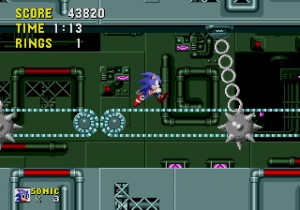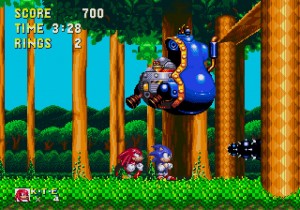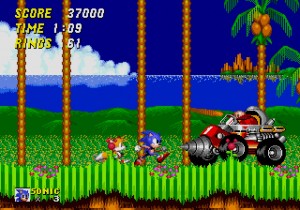Game: “Sonic Classic Collection”
Berserk Boy
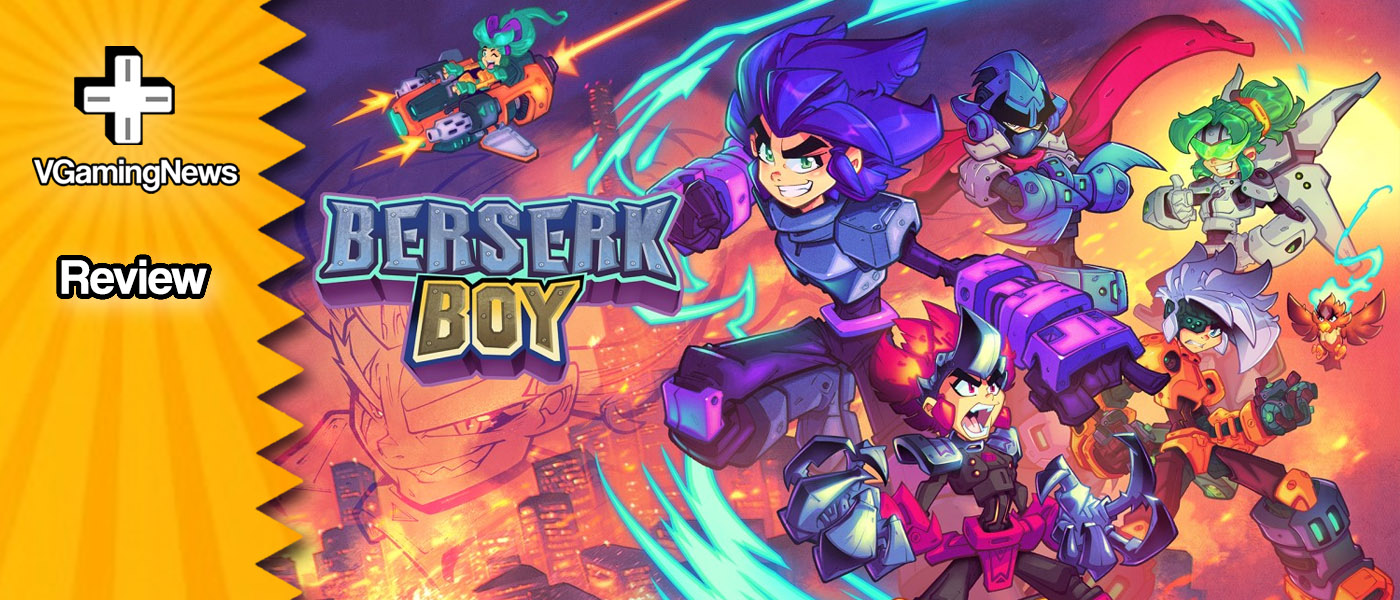

In a month where I celebrated my 40th birthday, I’ve been looking back over a lot of things, including video games. It’s strange to think that I’ve now been wielding a controller for probably three-quarters of my life, and how many of my favourite gaming experiences are still of those games I played almost 30 years ago. So as a gamer ‘of a certain age’, pixel art platformer Berserk Boy immediately appealed to my sense of nostalgia, sporting a gorgeous look that’s clearly inspired by some of the greats of my heyday. Without a moment to spare, I snatched up my pro controller – it was time to go berserk!
Berserk Boy takes place in the year 21XX, in a world where the powers of darkness have risen up and humans live under constant threat of their attacks. Helping fight back against the forces of evil are the Resistance, a military force who fight off the Shades and offer aid to the remaining human populace. Our protagonist is Kei, a young boy recently enrolled in the Resistance, who becomes embroiled in a battle to gather the long-lost Berserk Orbs -mythical artefacts of great power- from a maniacal scientist known as Dr Genos. As Kei, you’ll quickly find and merge with a Berserk Orb, granting you the power of lightning speed and the ability to control electricity! By using these powers you’ll have to battle your way through an army of Shades, overcome Dr Genos’ henchmen and collect their Berserk Orbs, so that you can grant Kei more elemental powers to help him take on the power-mad doctor himself.
At A Glance
| BERSERK BOY | |
| Positives | + Pulsing soundtrack highlights the action + Bright and playful pixel art visuals + Loads of optional pickups to extend the fun |
| Negatives | – Collection of control niggles – Later abilities begin to overpower the level design – Weak final act |
| Overall | 7 /10 |
| Played On | Nintendo Switch |
| Also Available On | PC |
| Find out about our scoring policy here. | |
At first glance, Berserk Boy may look like an old school run ‘n’ gun affair, but it actually plays a lot more like a Sonic-style platformer, where fast-paced jump and dash attacks are the order of the day. Levels are set out in large blocky pathways that are littered with spikes, pitfalls and blasters to hamper your progress. A la Sonic Adventure 2, enemies are strategically placed to invite you to dash attack multiple baddies in a row, and along with the handy grind rails, you’re able to traverse great chunks of the level without your feet ever touching the ground. It’s a simple but effective formula, and the pace at which you can zoom around the levels is an awful lot of fun. You can play Berserk Boy on one of two difficulty levels, Modern and Retro; the Modern options gives you an unlimited number of chances to reach the end of a level, where the Retro mode takes a more traditional lives-based approach whilst also making the enemies a little bit tougher. I played in the game Modern as that seemed to be the default option, but I’d recommend Retro for players with any platformer experience, as Berserk Boy never risks reaching anything close to Mega Man difficulty levels.
Each level contains a number of human survivors who are hidden throughout, and as a Teleporter working for the Resistance, Kei must find them and get them to safety. Finding all of the Resistance members in each level unlocks an Ex. Level – these are time trials where it’s a race to reach the finish -but be warned- there are no checkpoints, so tread carefully or you’ll have to start again from the very beginning! Also stashed throughout each level are five Berserk Medals; often tucked away in the most tricky to find or hard to reach areas, you’ll need to search high and low to collect a bunch of these if you want to overcome Dr Genos and save the world.
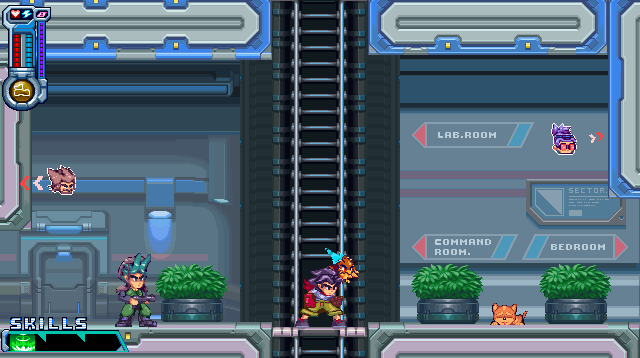
In the standard Berserk form, Kei’s basic attack allows you to smash into an enemy at high speed; this not only causes damage but charges them electricity as well – then with one simple push of a button, you can unleash a blast of power to any (and all!) baddies you’ve tagged with a powerful shock attack! Each of the five Berserk Orbs you collect come with their own skills and signature attacks, and you can swiftly switch between them at will with a flick of the right analogue stick. And since the action freezes while you’re on the form selection wheel, you’re able to select the right power without any stress before getting back to zooming around in your preferred form.
Being picky, as I am, the controls can sometimes get a little bit in the way of the fun – particularly when it comes to the accuracy of inputs with the analogue sticks. This was especially true when using the multiple dash ability in ice form, and I felt like I never had great control of Kei as I attempted to speed between large numbers of targets. The right analogue stick is the main perpetrator though, and I found myself being given the wrong form from the selection wheel pretty regularly, particularly when I was in a hurry to switch. It seemed that pushing the stick in one direction would sometimes cause the game to select the opposite side when the stick ‘flicked back’ into place. This might not sound like an especially egregious issue, but when you’re trying to speed your way through a level and find yourself without the power you’re expecting, you can plummet to your doom which is really quite annoying.
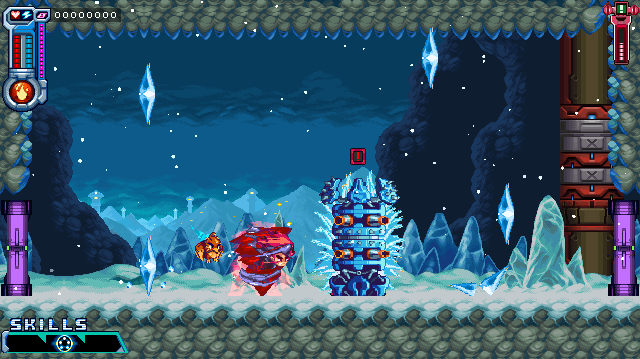
The default button mapping on the Switch felt really foreign too, and I imagine this comes from cutting and pasting the control scheme directly from the PC version, where Xbox button layouts are the default. And yes, while you can remap the controls easily enough, this too comes with a problem – half of the onscreen prompts use the remapped controls and half of them don’t! This caused considerable confusion whenever I was trying to figure out what I needed to press, I was regularly second-guessing the prompts. Thankfully, all of this is very patchable, and I’m sure Berserk Boy Games will work out these kinks in no time.
Visually, however, things are top notch. With its retro-inspired HUD, chunky character sprites, and bright, lively environments, it’s hard not to think of games like Mega Man X and Sonic 3 – two absolute giants in the 2D-platforming arena. There’s a wonderful cohesion between all of the visual elements that underlines how much care and attention has gone into crafting this very specific look and there isn’t an area of Berserk Boy that isn’t polished to a mirror shine.
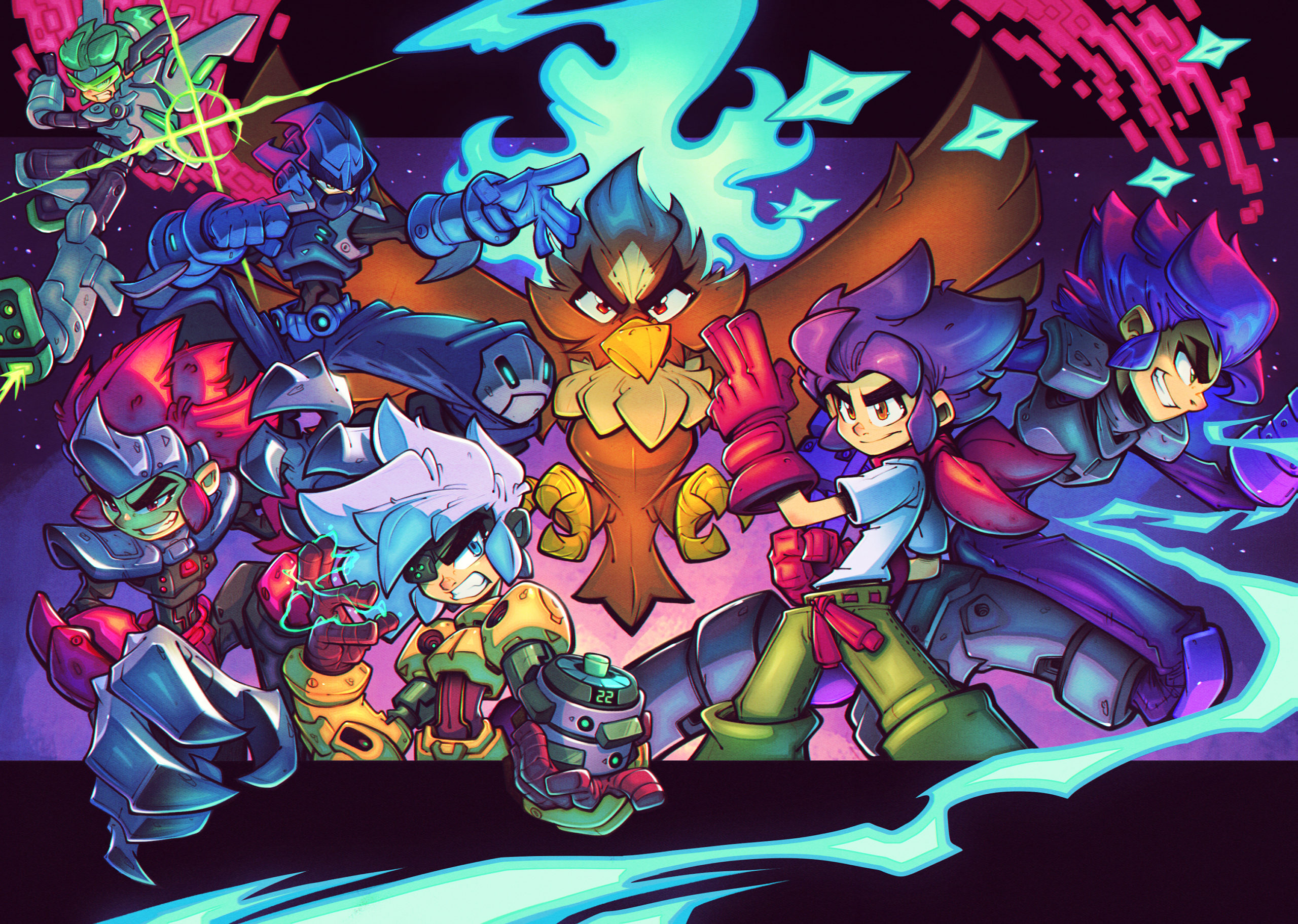
While the environments and animations are well crafted, it’s the cast of characters that undoubtedly steal the show, with the strong anime stylings breathing tremendous life into each and every character you meet. Whether it’s stoic Commander Leslie, the maniacal Dr Genos, or just one of the nameless Resistance refugees, the look and style of each character really helps bring the world to life. Kei’s multiple forms have very cool looks too, with the ninja-inspired Ice Kunai and anime pilot themed Soaring Winds coming in at my top spots.
Sadly, I do feel that Berserk Boy starts to lose some momentum as you begin to reach the later stages. Not an especially difficult platformer to begin with, once you collect the Soaring Wind and Mine Buster forms, the challenge level is lessened considerably. Kei is suddenly able to glide through huge areas of platforming by simply steering him with the analogue stick, avoiding pitfalls and dodging enemies with zero ability required. And the battle sections too are reduced to a few seconds of button bashing, since the Mine Buster cannon lays waste to any-and-all comers in just a hit or two. Even the ‘Final Showdown’ level suffers from Kei feeling overpowered, though I was glad that a genuinely enjoyable final boss battle managed to pull the nose up at the crescendo.
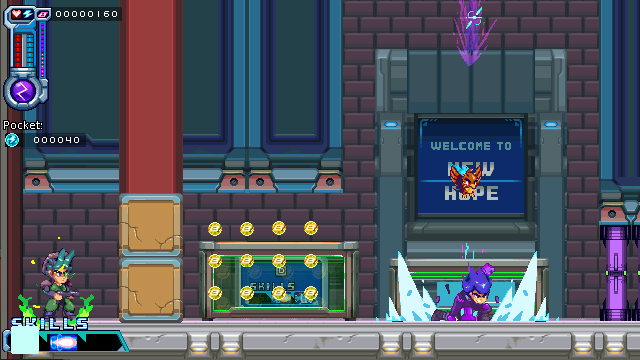
Berserk Boy Games may have shot themselves in the foot by not also introducing some equaliser mechanics to maintain the challenge once you gain these powerful forms. I feel like having sections where you can only use one specific form to get around (and all of the others are locked out) would have a huge positive impact on the engagement, especially in those later worlds. Being able to change Berserk Boy’s abilities at the flick of a switch is a great selling point, but it feels like we might have been given a little too much of a good thing.
One thing that you can’t get too much of though, is the absolutely stellar soundtrack by Sonic Mania maestro, Tee Lopes. The music is perfectly in keeping with the aesthetic, made with equal portions of electro-beats and shredding guitars that push you on at breakneck speed. All of the tracks are catchy and well put together, but I think the boss theme has to be my favourite – it’s an awesome, high octane track that builds with frantic energy as you dash around, avoiding crazy attacks and pummelling your opponent.
In summary, Berserk Boy is a beautiful homage to the 2D games of yesteryear, offering lightning-paced platforming that’s an absolute blast. With stunning environments and wonderful, anime-inspired pixel art characters, the visuals are to die for – as is the top-tier, turbo shredding soundtrack. A lean towards being slightly too easy, along with some level design oversights late-game keep it from being a classic, but Berserk Boy certainly offers a fun experience. I hope this is just the inaugural entry in a great new series of 2D platformers – it certainly has the potential.
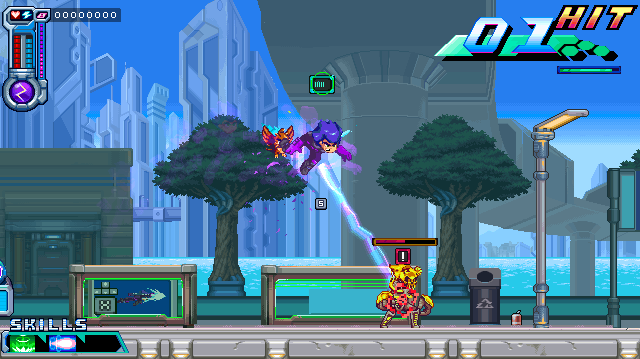
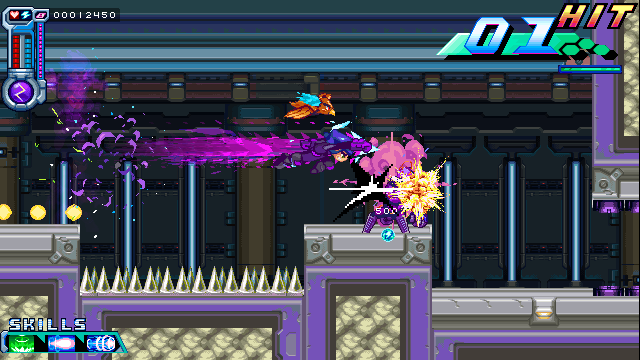
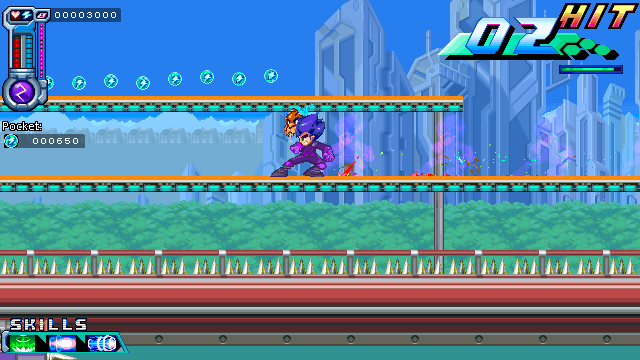
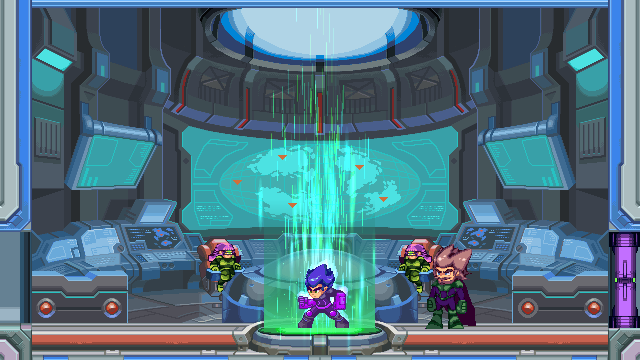


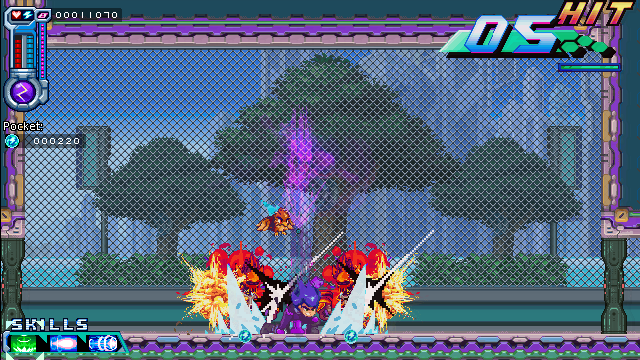
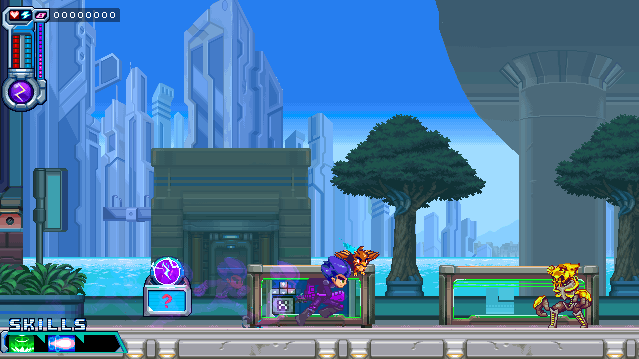
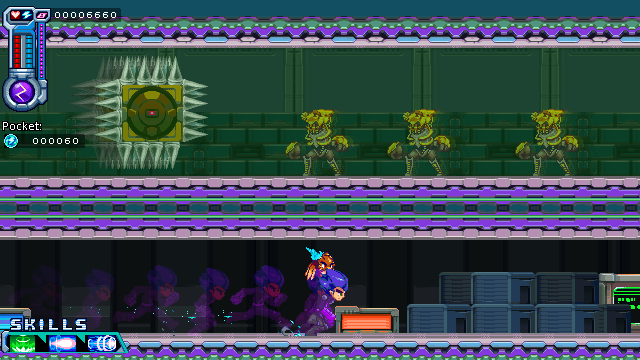
In the interest of full disclosure, VGamingNews was provided with a copy of the game in order to conduct this review.
Thanks for taking the time to read our review. If you’d like to support us further, please consider buying us a coffee!
Sonic Classic Collection

Sonic.
The very name causes us who are in their late teens and older to smile, that sad smile that you only pull when you’re happy but sad at the same time. The juxtaposition in feeling that causes internal conflict and to remember everything with a shade of rosé. To anyone who’s not old enough to have played games between 1991-1999 will simply laugh. Sonic has managed to loose it’s classic and perfect status that it had back in the early days of what could be considered modern gaming, with some truly hideous titles that’s left nothing but a sour taste in the players mouth.
In an attempt to pacify the concerns of the players and so that Sega know that they’ve still got a cash-cow, the developers over at the Sonic Team are doing what’s been demanded of them for a long time: 2D Sonic games. Of course, just making a game in 2D doesn’t mean it’s going to be a good, just look at Four Swords Adventures from the Zelda series to see that. Yet Sonic the Hedgehog 4 Part 1 looks like it’s going to be great and of course the marketing department over at Sega can’t miss the chance to make a bit of cash from this old, arthritic hedgehog.
Welcome: Sonic Classic Collection, on the Nintendo DS. Featuring all of the main Sonic games that came out on the Sega Mega Drive, with the exception of the Spinball and 3D games. Of course, the majority of these games have been re-released dozens of times over the years, heck; I even own all of the main Sonic titles two or three times in different forms as it is. What makes the Sonic Classic Collection different from all of the previous editions of these games is simple – Knuckles.
In the majority of the older editions Sonic and Knuckles was added on at the end as a sidethought, that last truly Sonic 2D game before the Sega Saturn came out with all of its new thoughts, music and Sonic CD. It’s that game that a lot of people forget about – just like Paper Mairo 64. This time around though, Sega have put a lot of effort into making sure that Knuckles is recognised and that their hardwork has not gone amiss – Knuckles can appear in Sonic 2 and Sonic 3 as himself. It’s time to actually sit back and pretend that you’ve pulled that Mega Drive out of the TV unit and put Sonic 2 on top of Sonic and Knuckles and hope the cat or dog won’t run over the Mega Drive causing this precariously placed object to fall apart.
The one downfall with Sega’s attempt at DS lock-on technology is that they’ve left out one key game – Sonic 1. Sonic 1 never actually featured Knuckles in the game; however, if I were to place Sonic 1 into Sonic and Knuckles I’d be met with a memorable screen of Robotnik, or as he’s now known Eggman, telling me off. However, if I was persistent I’d be met with the random Sphere World that was playable in Sonic 3 when I’d gathered enough rings or had jumped through those Giant Rings. This is sadly missing from Sonic Classic Collection as it can and did provide hours of pointless entertainment with nothing to show how well you’ve done, except for a strange sense of achievement.
Of course, if this was the title’s only let down it would be easily permissible; unfortunately, it’s not. The first thing that any keen Sonic player will notice is that the music is different, not changed, but different. This is due to the version of the original titles Sonic Classic Collection is using, it’s the US version. The NTSC version of all four games was faster than what we had in the UK, so it sounds odd and although it’s slightly off putting at first, it’s something that I could learn to live with. It just meant that some of my favourite Sonic tunes had gone to bad club and had an amateurish DJ just up the tempo on them.
When playing the various games, initially there seems to be very little change, which is the way it should be. These games are direct ports from the original games and as such, they retain all of the original charm, design quirks and simplicity that made them instant classics in the first place. Sonic 1, although twenty years old next year, has retained all of the glamour of the age and is as playable in one sitting today as it was in the days before saving. Sonic 2, the sequel and better of Sonic 1 has managed to keep it’s momentum going, even thought the levels have been played to death and all of the secrets are known to all. Sonic 3, the youngest brother who just isn’t as good as his older brothers shines the most out of this remake as it features the Save function it’s older brothers don’t and it also manages to recapture the Sonic magic that the first two had in abundance that’s been sorely lacking in recent years. Sonic and Knuckles the forgotten cousin once removed plays brilliantly and is as challenging and as amusing as it was the first time around.
The issue with all of these games, including the lock-on titles is the actual port from Mega Drive to DS. There is significant slow down and it’s not something that’s only spotted thirty minutes into the game either, as soon as I booted up Sonic 1 and ran and jumped to get the 10 Rings box on the ledge the slow down started, although subtle and slight it was noticed immediately. Whilst contuing to run around the various levels in Sonic 1 the slow down becomes more noticeable, it’s bareable but noticeable. Certainly nothing like the slow down that’s featured when I used to play 2 player mode in Sonic 2 and there were a dozen baddies in the same area, but slow down nevertheless. However, in Sonic 2 and Sonic 3 where there are a lot of moving background images and obstacles as well as baddies and Sonic rushing through the Zones, the slowdown becomes more pronounced and I had to compensate for it. Maybe it’s Sega trying to make old hands to the games think a little more, but I suspect it’s just not had enough attention lavished on it. Not forgetting the dodgy controls, maybe it’s just me, but you can’t push left and down at the same time on the DS and consistently as I could with the Mega Drive. The results are too varied, sometimes Sonic will roll and other times you’ve just lost 98 Rings in one go.
Yet, the very fact that these games have been repackaged and thrown into one DS cartridge shows that Sega are thinking, even if it is just a cheap ploy for some quick cash. The Sonic Classic Collection is enjoyable and although there are issues with controls and slow down, it’s not something that impacts that game to the point where it’s unplayable. The slow down can be frustrating, but it’s a frustration that passes when the rest of the game continues as these classic titles are simply superb.
Final Verdict:
7/10
Sonic Classic Collection is certainly worth purchasing, even if it’s just for the lock on technology. However, if you’re trying to introduce a younger gamer to the world of good Sonic games, then it may be better to let them play it on the Virtual Console as the slow down may impair the enjoyment for those with less experience to the Sonic world.


